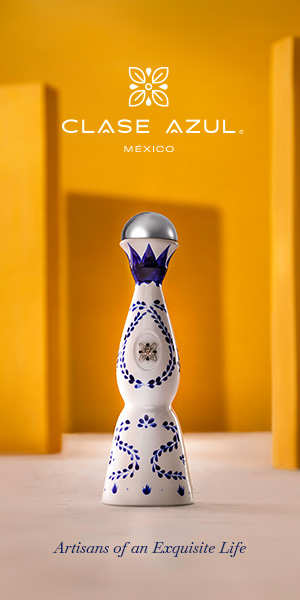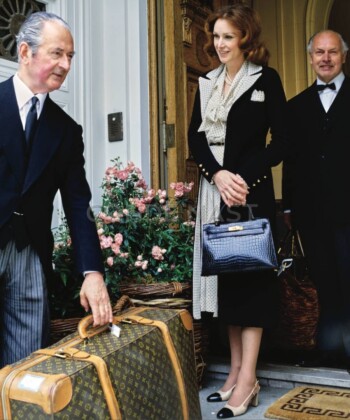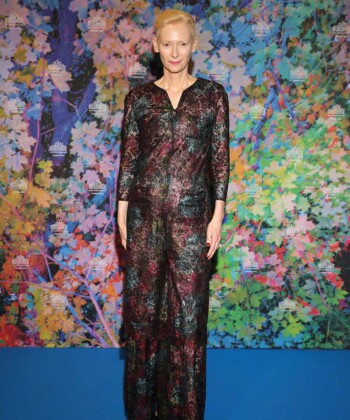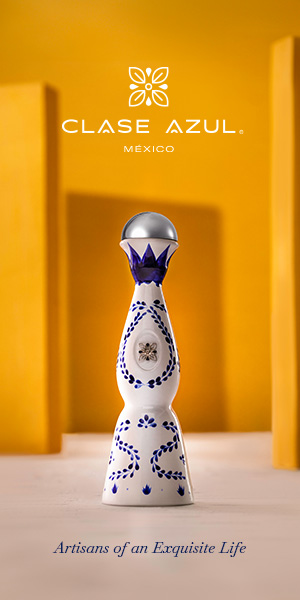Tamar Nais Hodel, the girl on the witness stand at Hollywood’s criminal court, was 14 years old in December 1949, but she seemed older. Involuntarily worldly. A photo taken soon after reveals a kind of Beat Generation Marilyn Monroe: unsmiling, lush-featured, with a platinum blond beehive, big, red lips and a snug white cardigan. She was a smart girl, private school–educated, with rarefied tastes. But Tamar was, without a doubt, tormented. And the person who did the tormenting was her father.
George Hodel stared at his daughter from the defendant’s table. He was charged with incest. A doctor with a genius IQ who specialized in venereal disease, Hodel was an admirer of the Marquis de Sade and a friend of movie, literary and art world libertines like John Huston, Man Ray, John Farrow and Henry Miller. Hodel hosted bacchanalian parties in his Mayan temple–styled home, built by Lloyd Wright on Franklin and Normandie, in the L.A. neighborhood now called Los Feliz. It was in that house, prosecutors said, he raped his daughter.
One of the lawyers for the defense, Robert Neeb, grilled Tamar on the stand that day. The defense team’s strategy was to make the girl come across as unstable, a pathological liar. Neeb’s effort to do just that would have unintended consequences that would reverberate for decades.
Two years before the Hodel trial, a savage murder shocked Hollywood. The mutilated body of 22-year-old Elizabeth Short, soon to be dubbed the “Black Dahlia,” was found in a vacant lot. No arrest had ever been made. To show the Hodel jury how “crazy” Tamar was, Neeb asked the girl: “Isn’t it a fact that you told a roomer in your mother’s home in San Francisco that you knew your father had killed the Black Dahlia?”
“No,” Tamar said.
But the terrified girl wasn’t telling the truth. Tamar did believe it—and with reason. She lived in her father’s house and heard the whispers, including his veiled warnings. “It’s an evil place,” said the art photographer Edmund Teske. “Women were tortured for sport there. Murders happened there.”

Tamar in her 20’s
Now, at the age of 80, Tamar is in a hospice in Hawaii. In fragile health, she wants the truth to come out. Not the bits and pieces glimpsed by the world up to now, but her whole harrowing story. I’m the only journalist who has ever interviewed her. Tamar describes an existence of abuse and violence, fear and guilt, all wrapped up in bohemian glamour. She was a stubborn idealist who lived a life following the principles of racial integration when you could be killed for doing so—and a desperate optimist who named her last three children (sons) Peace, Love and Joy. “She wanted so badly to be good,” her older daughter, Fauna Hodel, says. “Wanted” is the sad key word.
Her daughters, Fauna (a gallerist and motivational speaker) and Fauna-Elizabeth (née Deborah) Simon (a photo editor), are true survivors, each from a different bad B movie. Also safely emerged from the mayhem is Tamar’s half-brother Steve, who grew up in an astonishingly licentious household to become, of all things, a cop. Steve Hodel drew on all of his skills and training during a 15-year-long investigation to discover whether his own father murdered Elizabeth Short. He could not have done it without Tamar. At critical junctures, Tamar, and then one of her daughters, connected the dots. Dr. George Hodel as the Black Dahlia killer is a theory that more and more people support. But the victimization of Tamar Hodel is not theory. It is fact. And the details of her abuse—compounded by the tragic patterns created—defy belief.
Hollywood has presented, on screen and in real life, many stories of decadence, melodrama and crime, some of the best originating in the glamorous noir 1940s. Most of these stories were invented or exaggerated.
This one isn’t.

Above: Dr. George Hodel bought the Mayan temple–styled house on Franklin Avenue in 1940. It was the scene of infamous parties, and, claims his son Steve Hodel, the place where the Black Dahlia was murdered
Born in 1907 to wealthy Russian Jewish parents, George Hodel was raised in Pasadena as an indulged prodigy. At nine, he played major piano concerts. Handsome in a brooding, romantic way, he entered the California Institute of Technology at 14 and soon had an affair with a professor’s wife, who bore his baby. (Hodel would ultimately father 11 children by five women.)
Hodel’s teenage best friend was another rare bird, the talented and charismatic John Huston, son of Walter. Huston and Hodel sparred over a classmate, the delicate-faced and witty Dorothy Jeanne Harvey. She eloped with Huston, becoming the first of his five wives, and they ran off to Greenwich Village in 1925.
Meanwhile, Hodel—forced out of Caltech because of the impregnation of his professor’s wife—started a literary magazine, became a photographer, attended the University of California Berkeley and went on to medical school. He began working for the Los Angeles Board of Health in 1938, pursuing his specialties—venereal disease and secret abortions. Desperate women sought him out, providing him with all sorts of ammunition. “He had a dossier on the cops and their prostitutes—he had something on the police department,” Tamar told me.
When John and Dorothy Huston, now back in Los Angeles, divorced, Hodel romanced Dorothy and renamed her “Dorero,” a combination of Dorothy and Eros. They married in 1940, and Hodel bought the Franklin house, designed by the son of Frank Lloyd Wright. The doctor began to indulge his fascination with Surrealist art. It was a passion with dark underpinnings.
Surrealism was started in Paris as an outgrowth of Dadaism. According to art historians Mark Nelson and Sarah Hudson Bayliss, in their book Exquisite Corpse: Surrealism and the Black Dahlia Murder, “an interplay of irrationality, eroticism and violence was at the heart of Surrealism.”
Man Ray, a noted Surrealist painter and photographer, had become entranced with sadomasochism while living in Paris. When he moved to Los Angeles in 1940, the artist struck up a friendship with Hodel. The two became very close.

Dr. George Hodel, at age 38
Los Angeles was, in the ’40s and early ’50s, a simmering stew of sophistication, desperation and veiled danger. Brilliantly talented people of urbane temperament commingled with Dustbowl beauties whose ambitions often stalled at the hatcheck-girl or diner-waitress stage; hardboiled cops braved police and city hall scandals, such as the one captured in the James Ellroy novel and subsequent film L.A. Confidential. At war’s end, the cheerleading sunniness of the Big Band musicals was replaced by the dark themes of noir—lovers had a sexy avarice, a delicious untrustworthiness. The subtle violence and perversity of this L.A. moment were captured in classics such as The Big Sleep and Out of the Past.
In the house on Franklin Avenue, the lifestyle veered from the hedonistic to the Grand Guignol. And here is where a child made her unfortunate entrance. In 1935, another Dorothy—Dorothy Anthony, a San Francisco model—had given birth to Hodel’s daughter. Hodel insisted on naming her Tamar for the protagonist of a poem by his friend, Big Sur poet Robinson Jeffers. “Tamar” was a tormented woman who had sex with her brother, reinterpreting a biblical story. “George brought my mother and me into his home,” Tamar told me. It was like a harem: Dorothy, Dorero and, for a while, Hodel’s common-law wife, Emilia—all with Hodel’s children. “My father took avant-garde to the hilt, and the women went along with this,” Tamar said. “But it was hidden.”
Tamar and her mother moved out and back to San Francisco, but when Tamar approached pubescence, Hodel sent for her. His domination was extreme. “My father used to stand at the mantel and read poetry to everyone and inform us this was God speaking,” she said. She was sexualized. “Man Ray took nude pictures of me,” Tamar said. “I knew he was a great artist, but I didn’t feel comfortable. He felt like a dirty old man.” She was pressured to sunbathe nude. Her father gave her erotic books to read, determined “to make me a sex goddess.” When Tamar was 11, Hodel forced her to perform fellatio on him. “I gagged! I was scared! I was embarrassed!”
The year before, in May 1945, Ruth Spaulding, the secretary at Hodel’s venereal-disease clinic (and thus the keeper of many secrets), was found dead of an overdose. Police suspected it was forced but couldn’t prove it. Her death was ruled “suicide.”
NEXT: “Supposin’ I did kill the Black Dahlia? They can’t prove it now, because my secretary is dead.”












































